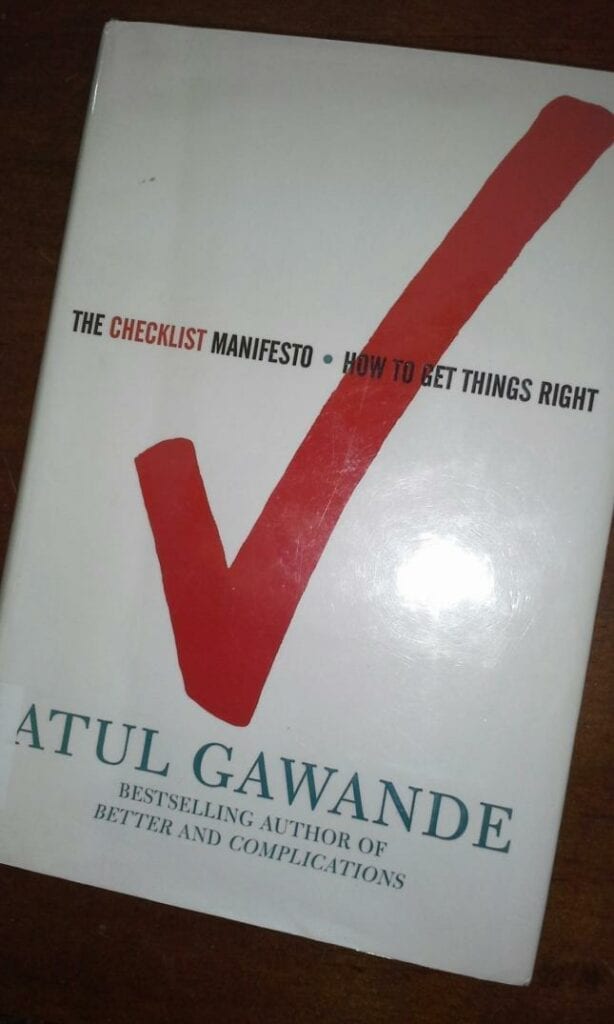Written by Linda Yau, M.D., F.A.C.P.
November 15, 2013

The Checklist Manifesto
Dr. Atul Gawande
Published by Metropolitan Books, 2009
As evidenced by the title, The Checklist Manifesto makes a solid case for using a simple concept, the checklist, to improve patient and healthcare outcomes. Dr. Gawande, a frequent contributor to The New Yorker, serves as an attending endocrine surgeon at Brigham and Women’s Hospital in Boston. He opens the book with compelling stories of patients that were close to death and what details of the patients’ care helped to save their lives. This book, similar to my last review of How Doctors Think, also inspires me to improve patient care by being methodical and thorough. In other words, by using a checklist, Dr. Gawande shows strong evidence on patient care improvements.
The author writes in a straightforward manner, using examples of how industries such as airlines, building construction and WalMart’s response to the Hurricane Katrina disaster all improved with checklists. He explains that in medicine, it is only relatively recently that many of our problems have more to do with management of our knowledge rather than the lack of knowledge. As he writes in the introduction to the book, “We have accumulated stupendous know-how… Nonetheless, the know how is often unmanageable…the volume and complexity of what we know has exceeded our individual ability to deliver its benefits correctly, safely or reliably. Knowledge has both saved us and burdened us.”
Dr. Gawande builds a solid case for using a simple tool such as a checklist based on many trials that have shown how a 5 step checklist strictly enforced at the Johns Hopkins Hospital ICU for every patient that had a central line placed made an incredible difference in complications from line infections. In one year, the checklist had prevented forty-three infections, eight deaths and saved two millions dollars in costs. These results have been duplicated in hospitals around the country. Throughout the book, more and more compelling examples of how experts who are highly trained benefit from following a simple checklist to ensure good outcomes in construction, in financial investing, and flight safety. He relates the inspiring story of Captain Sully Sullenberger, the airline pilot who successfully navigated Flight 1549 to be the “miracle on the Hudson” where his plane, after being struck by a group of Canadian geese, was able to land safely with all 155 passengers intact. In analyzing this “miracle”, it becomes clear that not only the experience of the pilots mattered, but the fact that airline safety has set protocols in place that pilots and stewardesses follow in emergencies is key to the best shot at survival for all onboard.
Dr. Gawande served on the World Health Organization’s committee to improve surgical outcomes throughout the globe. The committee spent countless hours reviewing all the possible interventions that could promote surgical results. It turns out the most effective method was to develop a presurgical checklist. He relates the trials and tribulations of developing such a checklist; however, in the end, he tells story after story of how the checklist helped save many patients in life and death situations.
In closing, he explains that although we have a “thirty billion dollar a year National Institutes of Health, which has been a remarkable powerhouse of medical discoveries…we have no National Institute of Health Systems Innovations alongside it studying how best to incorporate these discoveries into daily practice.” In other words, medicine does not have an overall safety board that tracks improvements and how best to incorporate our discoveries into the daily practice of medicine. After reading his book, one has the inspiration to petition Congress to establish such an organization which help the health care system function more efficiently and effectively, improving medical outcomes for all of us.
Lastly, if you want a shorter example of Dr. Gawande’s excellent writing and thinking on how to improve processes in medicine, read this article which compares the processes in the restaurant The Cheesecake Factory to our processes in medicine: http://www.newyorker.com/reporting/2012/08/13/120813fa_fact_gawande
Tags:
